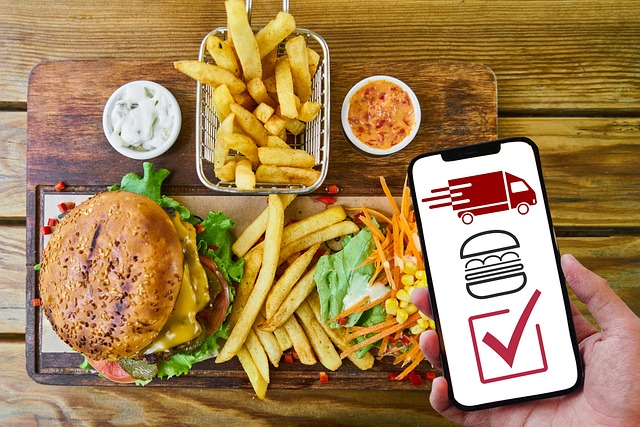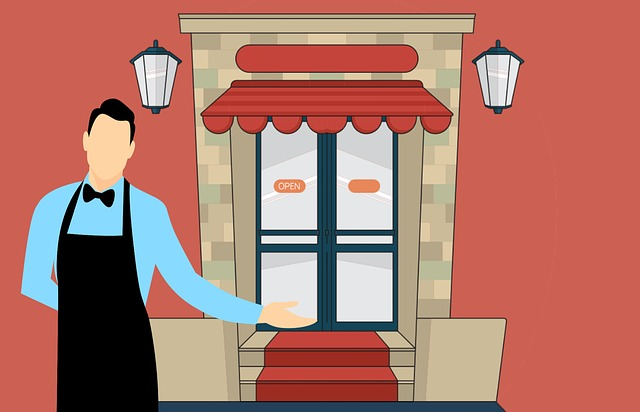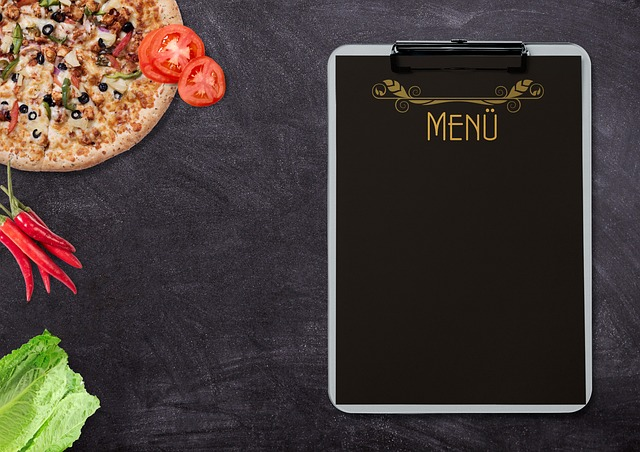What is a Third-Party Delivery Service?
Third-party delivery services facilitate the delivery of goods from businesses to consumers. In the context of the food industry, these services act as intermediaries between restaurants and customers, providing a convenient way for people to order meals from their favorite eateries without leaving their homes.
Role of Delivery Companies in the Food Industry
Delivery companies play a crucial role in the food industry by offering an efficient means for restaurants to expand their customer reach beyond traditional dine-in patrons. They enable eateries to cater to individuals who prefer enjoying restaurant-quality meals in the comfort of their homes, ultimately contributing to increased revenue for these establishments.
The Impact of Delivery Apps on Restaurant Deliveries
The emergence of delivery apps has revolutionized how restaurant deliveries are carried out. These platforms provide users with easy access to various dining options and streamline the ordering process. As a result, restaurants can attract new customers who may not have considered dining at their physical locations, leading to heightened brand visibility and sales growth.
Impact of COVID-19 on the Rise of Delivery Service Popularity
The COVID-19 pandemic has accelerated the popularity of delivery services as people sought safer alternatives to dining out during lockdowns and social distancing measures. This surge in demand underscored the essential role of delivery service providers in meeting consumer needs while adapting to challenging circumstances in the restaurant industry.
How do Third-Party Delivery Services work?
Third-party delivery services are crucial in connecting customers with their favorite restaurants and businesses, offering the convenience of having items delivered directly to their doorsteps. When customers crave a meal or need groceries, they can use delivery apps or websites to place their orders, which are then seamlessly transmitted to the respective restaurants or stores.
Delivery drivers, receive these orders and embark on a journey to pick up the requested items from the designated locations. Once collected, they swiftly reach the customers’ specified addresses for prompt deliveries. This process ensures that customers receive their desired products without leaving the comfort of their homes.
Customers may be charged delivery fees when utilizing third-party delivery platforms in exchange for this convenience. These fees contribute to covering operational costs and compensating the delivery drivers for their efforts in ensuring timely and efficient deliveries. While some customers are willing to pay these fees for added convenience, others may prefer establishments that offer free or discounted delivery options.
Delivery Apps and Websites
Customers access third-party delivery services through user-friendly apps or websites designed to streamline the ordering process. These platforms provide an extensive range of participating restaurants and businesses, allowing customers to browse menus, select items, and place orders with just a few taps or clicks. The intuitive interfaces of these apps enhance customer experience by making it easy to track orders and communicate with delivery drivers.
Role of Delivery Drivers
Delivery drivers are integral components of third-party delivery services, responsible for executing seamless deliveries from start to finish. They navigate through traffic and varying weather conditions while prioritizing timely deliveries and ensuring that items reach customers in optimal condition. Their dedication plays a significant role in maintaining customer satisfaction and fostering positive relationships between businesses and consumers.
What are the benefits of a Third-Party Delivery Service?
Partnering with a third-party delivery company can significantly expand your customer reach as a business owner.
Convenience
These services offer unparalleled convenience for customers, allowing them to order from your restaurant without leaving their homes. This can attract new customers who may not have been able to visit your establishment in person.
Wide Variety
Third-party delivery apps provide access to various food options, catering to different tastes and dietary preferences. By partnering with a delivery service, you can reach a larger audience and attract customers with diverse culinary interests.
Efficient Service
The efficient delivery service provided by these companies ensures that your food reaches customers promptly and in optimal condition, enhancing their overall dining experience.
Cost-Effective
Partnering with a cost-effective delivery service can attract budget-conscious customers who may be more inclined to order from your restaurant if they know they won’t encounter unexpected fees or inflated prices.
What are the drawbacks of a Third-Party Delivery Service?
While these services offer many advantages, you should also know the disadvantages.
High Delivery Fees
High delivery and service fees associated with third-party delivery services can substantially increase the overall cost for both customers and restaurants. These fees often include service charges, small order fees, and additional costs during peak hours. Consequently, customers may pay significantly more for their meals than if they were dining in or ordering directly from the restaurant.
Food Handling by Delivery Drivers
Delivery drivers may not always handle food properly, potentially compromising its quality and safety during transit. The risk of spillage, incorrect handling of temperature-sensitive items, or even tampering cannot be entirely eliminated when relying on external parties to deliver food. This could lead to customer dissatisfaction and damage the reputation of the restaurant and the delivery service.
Lack of Control Over the Delivery Process
Restaurants using third-party delivery services may struggle to control the delivery process. This lack of oversight can result in delayed or incorrect orders reaching customers, leading to potential dissatisfaction and negative reviews. Without direct involvement in the delivery process, restaurants risk losing touch with their customers’ experience once the food leaves their premises.
Reduced Profit Margins
The reliance on third-party delivery services can significantly reduce a restaurant’s profit margins due to commission fees charged by these platforms. With commission rates typically ranging from 15% to 30% per order, restaurants face financial strain as a substantial portion of their revenue is directed toward third-party delivery companies. This reduction in profits can impact a restaurant’s ability to invest in quality ingredients, staff training, or overall business growth.
Third-Party Delivery Services Pros & Cons
Pros:
- Increased reach and customer base.
- Access to delivery infrastructure and expertise.
- Potential for increased sales and revenue.
Cons:
- Reduced profit margins due to commission fees.
- Less control over the delivery process and customer experience.
- Dependence on third-party service for timely and accurate deliveries.
What are the best Third-Part Delivery Services?
Here are some of the best third-party food delivery services to expand your eatery’s customer reach.
DoorDash
- Commission fee: 15% – 30% for most businesses.
- Offers quick and reliable delivery services with a variety of restaurant partners.
DoorDash stands out for its quick and reliable delivery services, ensuring customers receive their orders promptly. With a wide array of restaurant partners, DoorDash provides an extensive selection of dining choices, accommodating different tastes and dietary requirements.
Uber Eats
- Commission fee: 15% – 30% or 6% for pickup orders.
- Known for its wide range of restaurant options and user-friendly interface.
Uber Eats is a top choice for food delivery due to its extensive restaurant options. Users can explore various cuisines and dishes catering to diverse preferences. The platform’s user-friendly interface makes it easy for customers to place orders and track deliveries seamlessly.
The company acquired Postmates in 2020. Postmates goes beyond traditional food delivery by offering services for groceries and other essential items. This versatility sets Postmates apart as it meets a broader spectrum of customer needs. Whether it’s a meal from a favorite restaurant or daily essentials from the store, Postmates ensures prompt deliveries.
Grubhub
- Commission fee: 15% – 30% depending on marketing features (5-20% base price + 10% delivery fee).
- Provides a seamless ordering experience and diverse food options for users.
Grubhub offers a seamless ordering experience, allowing users to browse numerous food options effortlessly. The platform’s intuitive interface simplifies the ordering process, enhancing convenience for customers. Grubhub’s diverse range of food options caters to various culinary preferences.
Should my restaurant use a Third-Party Food Delivery Service?
Third-party food delivery services offer customers convenience and can expand a restaurant’s reach. They also relieve the restaurant from hiring delivery staff.
However, these services often charge high commission fees, significantly impacting the restaurant’s profits. Here are some important considerations to help you decide if partnering with a third-party delivery platform is right for your business.
Impact on Profits and Customer Experience
While third-party delivery services can increase sales by reaching a broader customer base, they also reduce profit margins due to the high fees. Restaurants may have less control over the quality of food delivery compared to in-house delivery services, potentially impacting customer experience.
Before opting for third-party food delivery services, restaurants must assess their financial implications carefully. They should consider factors such as commission fees, potential increases in sales volume, impact on brand reputation, and overall profitability.
Essential Factors to Determine if a Third-Party Delivery Service Makes Sense
Restaurants should evaluate various factors before deciding whether to use a third-party delivery service. These include analyzing the demand for food delivery in their area, estimating potential additional revenue versus commission fees, assessing customer preferences regarding ordering methods (e.g., app-based vs. website-based), and understanding competitors’ strategies in terms of food delivery.
Alternatives to Third-Party Food Delivery Services
Local restaurants can explore alternatives such as establishing their own delivery system or collaborating with local delivery companies. Setting up an in-house delivery team or partnering with local drivers could provide more control over deliveries and potentially reduce costs associated with third-party services.
How can my small business stand out on Third-Party Delivery apps?
Using a third-party delivery service helps expand your reach, but there’s also significant competition on these apps. Here are some tips to help your small business compete with corporate chains.
Optimize Your Business Profile
Optimizing your business profile on third-party delivery apps is crucial for standing out. Use high-quality images that showcase your food and establishment and provide detailed descriptions of your menu items. This helps entice potential customers and gives them a clear idea of what your small business has to offer.
Offer Exclusive Deals and Promotions
Consider offering exclusive deals and promotions to attract customers and distinguish your small business from others on the delivery apps. These could include discounts for first-time orders, loyalty programs, or bundled meal deals. By providing unique incentives, you can capture the attention of app users and encourage them to choose your restaurant over competitors.
Provide Excellent Customer Service
Ensuring excellent customer service and timely deliveries is paramount for enhancing your small business’s reputation on delivery platforms. Promptly addressing customer inquiries or concerns can leave a positive impression, potentially leading to repeat orders and positive reviews. Reliable delivery services contribute to customer satisfaction, further solidifying your business’s standing in the competitive landscape of meal delivery services.
Utilize Social Media and Online Marketing
Leverage social media and online marketing strategies to drive traffic to your delivery app profiles. Engaging posts featuring appetizing photos or behind-the-scenes glimpses into your kitchen can pique the interest of potential customers. Encourage satisfied patrons to share their experiences on social media platforms, amplifying visibility for your small business within food delivery services.
What should I look for in a Third-Party Delivery Service?
It’s essential to conduct thorough research on various third-party delivery services before deciding. Consider reading reviews from other businesses or seeking recommendations within your industry to gain insights into each service’s performance.
Reliability and Timeliness of Deliveries
When considering third-party delivery services, it’s crucial to prioritize reliability and timeliness. Look for a service with a track record of delivering orders promptly and consistently. Reliable deliveries ensure that your customers receive their orders on time, leading to increased satisfaction and loyalty.
Range of Delivery Options and Service Areas
A comprehensive range of delivery options and service areas is essential for reaching a broader customer base. Opt for a delivery service that offers diverse delivery options, such as contactless delivery, scheduled deliveries, or real-time tracking. Moreover, ensure that the service covers a wide geographic area to cater to customers across different locations.
Quality of Delivery Drivers and Customer Service
The quality of the delivery driver directly impacts the overall customer experience. Choose a third-party delivery service known for its professional and courteous local delivery drivers who handle orders carefully. Prioritize exceptional customer service from the delivery staff, as they serve as the face of your business when interacting with customers.
Transparency in Pricing and Fees
Transparency in pricing and fees is vital when selecting a third-party delivery vendor. Ensure the service provides clear information regarding commission rates, additional fees, and other charges. Transparent pricing helps you manage costs effectively and fosters trust between your business, the delivery service, and your customers.
How do I partner with a Third-Party Delivery Service?
To effectively partner with a third-party delivery service, it’s essential to follow specific steps that ensure a seamless collaboration for your business.
Research and Compare
Research different third-party delivery services, such as food delivery apps and companies, to identify the best fit for your business. Look into factors like their reach, fees, customer base, and overall reputation. Comparing these aspects will help you make an informed decision.
Contact the Chosen Service
Once you’ve identified a potential partner, contact them to inquire about their partnership requirements and application process. Most delivery services have specific criteria businesses need to meet to collaborate with them effectively. You can gain valuable insights into what they expect from your business by contacting them directly.
Ensure Your Business Meets Criteria
Before applying for a partnership, ensure that your business meets all the necessary criteria the delivery service sets. This may include factors such as your location, menu offerings, operational capabilities, and compliance with their standards. Meeting these criteria is crucial for a successful partnership.
Establish Clear Communication Channels
Upon approval of your partnership application, it’s important to establish clear communication channels with the delivery service. This includes understanding their app or platform for managing orders efficiently and coordinating with delivery drivers. Effective communication will streamline operations and maximize efficiency.
Frequently Asked Questions
Here are the most common questions about third-party delivery services.
What is the least expensive Third-Party Delivery Service?
Regarding third-party delivery services, businesses always seek the lowest commission fees. Some of the least expensive third-party delivery services for businesses include DoorDash, which offers a base commission rate of 15%, and Grubhub, which also provides a base commission rate of 15%.
Uber Eats is another option with a 15-30% base commission rate, depending on the services and support provided. Additionally, Postmates offers a base commission rate of 15-30%, with the potential for lower rates based on the volume of orders. These options can help businesses minimize costs and maximize profits when using third-party delivery services.
Can my restaurant be on more than one Third-Party Delivery app?
Your restaurant can definitely be listed on multiple third-party delivery apps. This means you can reach a wider audience and attract more customers by being visible across various platforms.
Here are some factors to consider about being on multiple delivery apps.
Increased Visibility and Potential Orders: Being on multiple apps increases your restaurant’s visibility, making it easier for potential customers to find and order from your establishment. With increased exposure, there’s a higher likelihood of receiving orders from different customer bases associated with each platform.
Efficient Order Management: Managing orders efficiently when your restaurant is listed on multiple third-party delivery apps is crucial. Utilizing technology such as order management systems can help streamline the process, ensuring that orders are received promptly and fulfilled accurately regardless of the platform they originate from.
Impact on Delivery Drivers and Customer Service: Listing your restaurant on several delivery apps may impact delivery drivers and customer service. Ensure that these platforms are integrated seamlessly with your existing operations to maintain high standards of service. It’s essential to consider the logistics of managing deliveries efficiently while providing excellent customer service across all platforms.
How can my business develop an in-house Food Delivery Service?
Developing an in-house delivery service could be a viable alternative to third-party delivery services. In-house delivery allows your business to maintain control over the delivery experience while saving on commission fees. However, you should carefully consider the best ways to implement and manage an in-house option.
Assess Demand for In-House Food Delivery Service
Before developing an in-house food delivery service, assessing the demand within your target market is crucial. Conducting research allows you to understand the preferences and needs of your customers. Analyze whether your area has a growing demand for restaurant delivery services. Consider factors such as the popularity of third-party delivery services, customer feedback, and the dining habits of your target audience.
Hire Reliable Delivery Drivers and Staff
The success of an in-house food delivery service heavily relies on hiring reliable delivery drivers and staff. These individuals represent your brand during every delivery interaction, making professionalism and timeliness non-negotiable attributes. Conduct thorough background checks, provide comprehensive training, and emphasize the importance of exceptional customer service to ensure that every delivery reflects positively on your restaurant.
Offer Diverse Delivery Options
To cater to varying customer preferences, offering diverse delivery options such as contactless delivery and real-time order tracking is essential. Providing contactless delivery ensures safety during these times, while real-time order tracking offers transparency and convenience to customers. You create a more inclusive experience for all patrons by accommodating different preferences.
Use a POS System That Allows for Delivery Options
Implementing a Point-of-Sale (POS) system that seamlessly integrates with various delivery options is crucial for streamlining operations. A robust online ordering system should facilitate order management tailored explicitly for deliveries, enabling efficient coordination between the kitchen staff and the delivery team.
Are there financing options to fund adding Delivery Services to my business?
Small businesses looking to incorporate delivery services can explore obtaining small business loans or lines of credit. These financial resources can assist in covering the initial setup costs associated with integrating delivery options into their operations.
By securing a loan or line of credit, businesses can acquire the necessary funds to invest in essential infrastructure such as delivery vehicles, packaging materials, and technology systems for efficient order management and tracking. Here are a few potential options to fund adding delivery services for your restaurant.
Some Third-Party Delivery Companies Offer Payment Plans
Businesses seeking to add delivery services can consider collaborating with third-party delivery companies that provide financing options or flexible payment plans for their services. Partnering with these companies allows businesses to leverage established delivery networks and provides access to financial arrangements that alleviate the upfront costs typically associated with launching a new delivery service. This approach enables businesses to gradually integrate deliveries into their operations while managing cash flow effectively.
Government Grants or Subsidies
Exploring government grants and subsidies tailored for businesses venturing into food delivery services is crucial. Many local, state, and federal governments offer financial assistance programs to support small businesses in diversifying their offerings, including introducing food delivery services.
Small Business Loans
Various lenders and business lending marketplaces (like UCS) offer small business loans. You may be interested in one of the following business funding options:
- Bad credit business loan.
- Business line of credit.
- Business loans for women.
- Business term loans.
- Equipment financing.
- Invoice factoring.
- Merchant cash advance.
- Revenue-based loan.
- SBA loans.
- Working capital loans.
- ERTC advance.
Third-Party Delivery Services – Final Thoughts
Whether you’re a restaurant owner or a small business looking to expand, these services can be a game-changer for reaching more customers. From the convenience they offer to the potential drawbacks, you’re equipped to decide whether to jump on the third-party delivery bandwagon.
Weigh the pros and cons in light of your unique business needs. Consider how these services impact your reach and revenue. Don’t forget to keep an eye on the latest trends and updates in the world of food delivery – it’s a fast-paced game, and staying ahead can give you the edge you need.
Contact us if you have more questions about third-party delivery services or to apply for a small business loan. Our alternative funding experts can help you find the best financing options for your restaurant or small business.






















